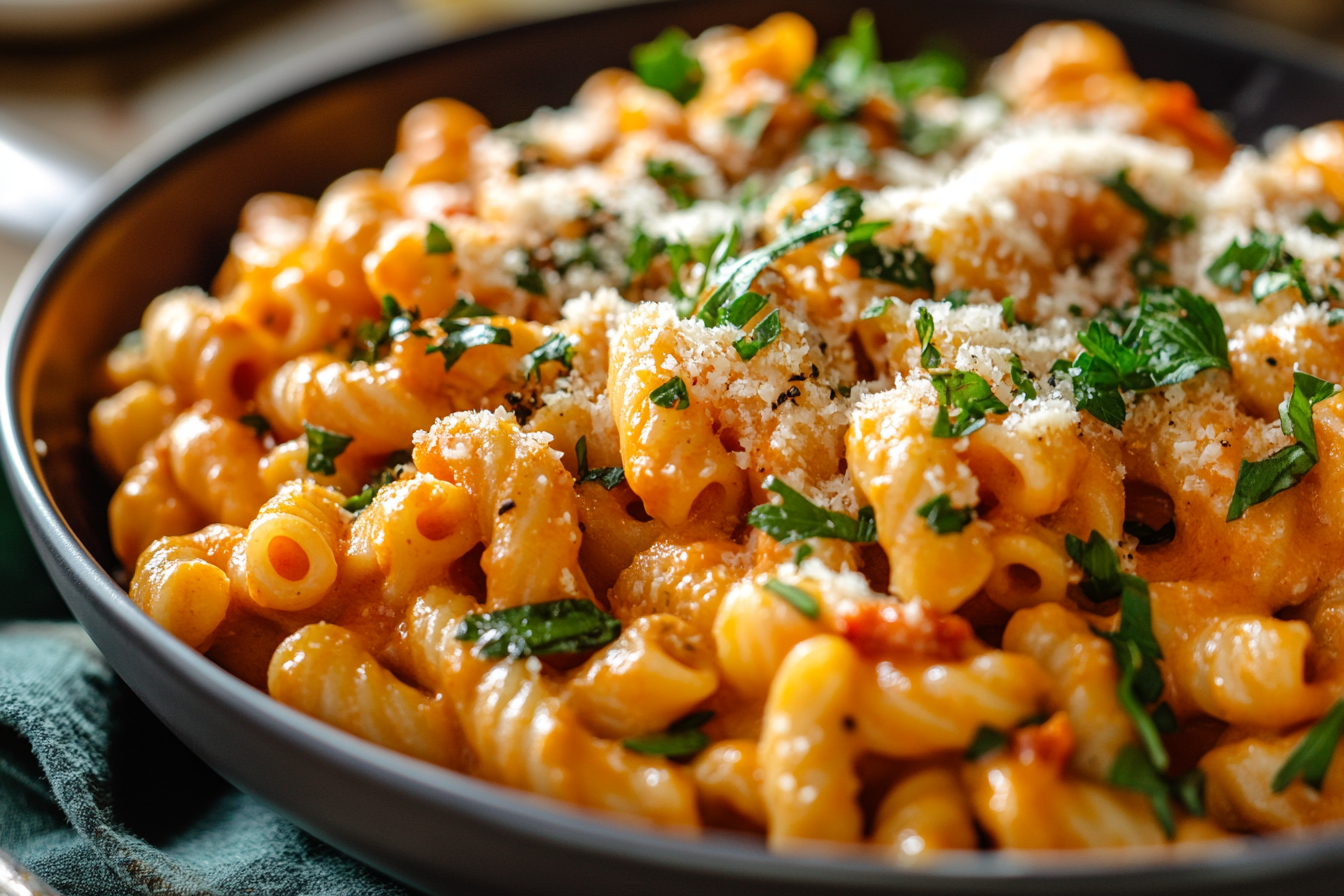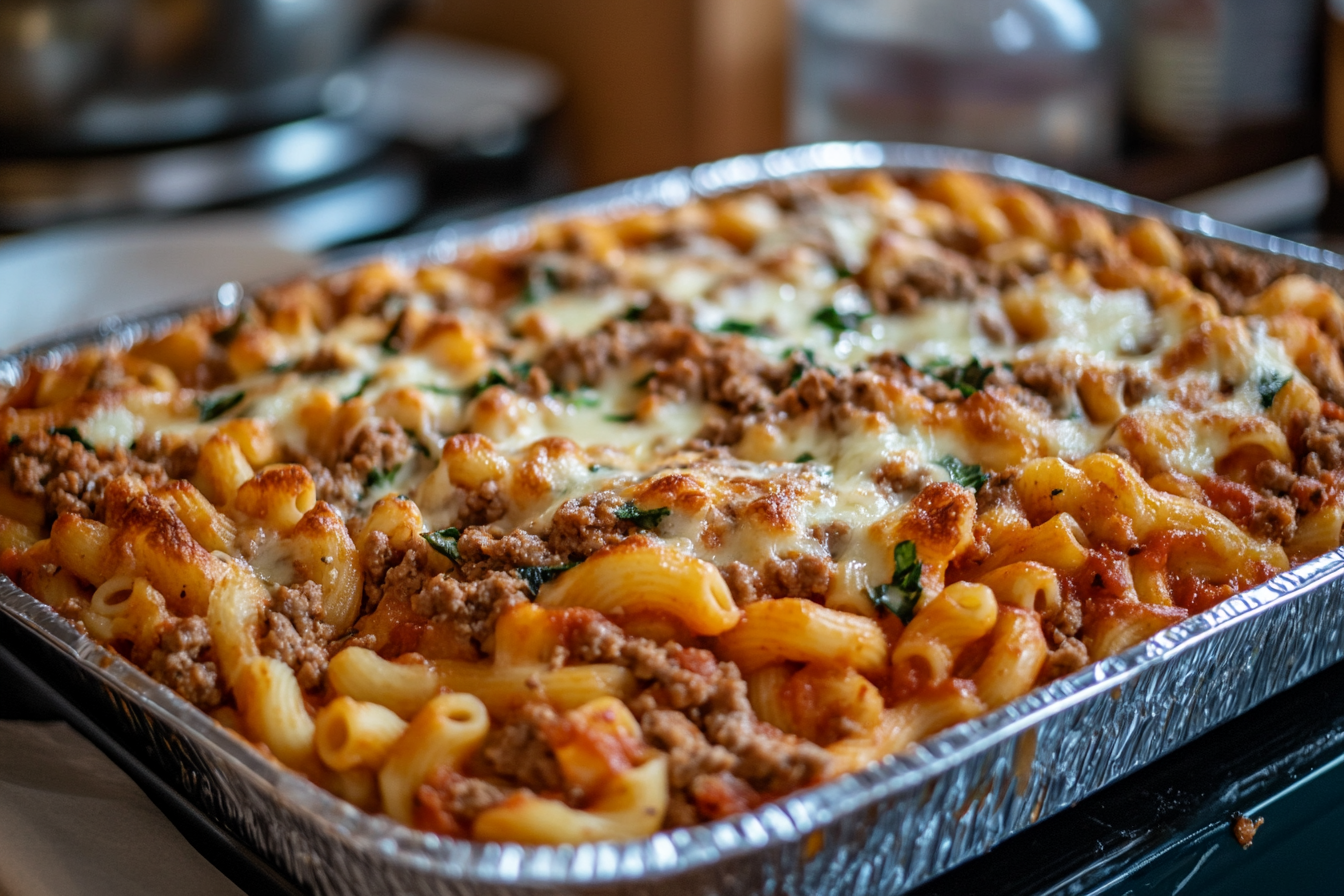Cavatappi is one of the most versatile pasta shapes available, known for its distinct corkscrew appearance and ridged surface. Its spiral shape allows it to hold sauces and ingredients beautifully, making it an ideal choice for everything from classic Italian dishes to creative fusion cuisine. Whether baked in a creamy casserole or tossed in a light salad, cavatappi brings both texture and flavor to the table.
In this comprehensive guide, we will explore the origins of cavatappi, how to cook it perfectly, its numerous uses in various dishes, and even its nutritional benefits. Let’s dive into everything you need to know about this delightful pasta.
What is Cavatappi?
Cavatappi is a short, ridged pasta that is twisted into a spiral, giving it the look of a corkscrew. Unlike some other pasta shapes, cavatappi is hollow, which makes it perfect for holding onto sauces. It’s made primarily from durum wheat semolina, a high-protein flour that contributes to its firm texture when cooked al dente.
Cavatappi’s ridged exterior, also known as rigati, adds to its sauce-holding capabilities, making it an excellent choice for dishes with rich, creamy sauces or chunky ingredients. Despite its ability to take on bold flavors, cavatappi also shines in lighter dishes where the pasta itself can stand out.
If you are looking for more delicate pasta, you might explore capellini, a thinner pasta often used in light sauces. For more details, check out capellini pasta.
Origins of Cavatappi
While pasta has been a staple in Italy for centuries, the cavatappi shape as we know it today is relatively modern. As mentioned, Barilla popularized this shape in the 1970s, naming it cellentani after the famous Italian singer Adriano Celentano. Due to trademark issues, other manufacturers began calling it cavatappi, the Italian word for “corkscrew,” which perfectly describes its helical shape.
Though its creation may have been accidental, cavatappi has since become an international favorite. Its adaptability and the way it pairs with so many ingredients and sauces have helped it move beyond Italy, finding a place in kitchens all over the world.
The pasta has even made its way into American cuisine, where it is often used in beloved dishes like macaroni and cheese, pasta salads, and casseroles.
How to Cook Cavatappi to Perfection
Cooking Tips for the Best Results
Cooking cavatappi is straightforward, but to ensure it is cooked to perfection, it’s important to follow a few simple steps. This ensures that the pasta retains its al dente texture, which is key to enjoying it in both hot and cold dishes.
- Boiling the Water: Start by bringing a large pot of salted water to a rolling boil. A good rule of thumb is to use 4-6 quarts of water per pound of pasta. The salt helps season the pasta as it cooks, enhancing its flavor.
- Add the Pasta: Once the water is boiling, add the cavatappi. Stir it immediately to prevent the pasta from sticking together or sticking to the bottom of the pot.
- Cook for 8-10 Minutes: Cavatappi typically takes around 8-10 minutes to cook to al dente. The pasta should be firm but tender when you bite into it.
- Reserve Pasta Water: Before draining the pasta, reserve a cup of the starchy cooking water. This can be added to your sauce later to help bind the pasta and sauce together for a smoother texture.
- Drain and Serve: Drain the pasta in a colander, but don’t rinse it. Rinsing removes the starch that helps sauces cling to the pasta. If you’re preparing a cold pasta salad, you can rinse it to cool it down quickly.
To achieve perfect texture, refer to our detailed guide on how to cook pasta to ensure you get the best results every time.
Using Cavatappi in Cold Dishes
While cavatappi is fantastic in hot dishes, it also works beautifully in cold dishes like pasta salads. Its spiral shape and ridged surface help to capture and hold dressings and other ingredients, making every bite flavorful.
When using cavatappi in cold dishes:
- Rinse with Cold Water: Unlike hot dishes, when making a pasta salad, you should rinse the cavatappi with cold water after draining it. This helps cool the pasta quickly and prevents it from sticking together.
- Dress Immediately: Once the pasta has cooled, dress it immediately with olive oil or vinaigrette to ensure it doesn’t dry out.
Pairing Cavatappi with Sauces
One of the key factors that make cavatappi such a popular choice is its ability to hold onto sauces. Whether you’re using a rich, creamy sauce or a light, olive oil-based dressing, cavatappi absorbs and clings to flavors better than many other pasta shapes.
Best Sauces for Cavatappi
- Creamy Alfredo Sauce: The hollow spiral shape of cavatappi is perfect for holding onto creamy sauces like Alfredo or carbonara. The ridges trap the sauce, ensuring that every bite is rich and satisfying.
- Tomato-Based Sauces: A classic marinara or a chunky tomato and basil sauce pairs beautifully with cavatappi. The pasta’s shape captures the tomato pieces and clings to the sauce, delivering bursts of flavor.
- Pesto: The coarse texture of pesto clings well to cavatappi. Whether you’re making a traditional basil pesto or experimenting with sun-dried tomato pesto, the pasta’s ridged exterior ensures that each twist is coated in the sauce.
- Oil-Based Sauces: For a lighter option, toss this versatile pasta with garlic, olive oil, and lemon. Add sautéed vegetables or seafood for a refreshing and healthy meal.
Looking for something new? Try out a more exotic pairing by using pepper jack cheese for a spicy twist on creamy sauces. You can learn more about this option at pepper jack cheese guide.
Popular Cavatappi Recipes
Here are some popular cavatappi recipes to try:
1. Cavatappi with Sausage and Broccoli Rabe
A classic Italian dish that combines the bitterness of broccoli rabe with the savory flavor of Italian sausage. The this versatile pasta holds onto the sausage and vegetable bits, while a light garlic and olive oil sauce binds everything together.
Ingredients:
- Cavatappi pasta
- Italian sausage
- Broccoli rabe
- Garlic
- Olive oil
- Red pepper flakes (optional)
Instructions:
- Cook the sausage until browned, remove from pan.
- Sauté garlic and red pepper flakes in olive oil, add broccoli rabe and cook until tender.
- Toss in the sausage and cooked cavatappi. Mix well and serve hot.
2. Baked Cavatappi Mac and Cheese
A decadent take on the traditional macaroni and cheese dish, baked this versatile pasta mac and cheese uses multiple cheeses to create a gooey, crispy, comforting meal. The ridges on the pasta help trap the cheese sauce, making every bite delicious.
Ingredients:
- Cavatappi pasta
- Cheddar cheese
- Gruyère cheese
- Milk
- Butter
- Flour
- Breadcrumbs
Instructions:
- Prepare a roux with butter and flour, then slowly whisk in the milk to create a béchamel sauce.
- Add shredded cheese to the béchamel until melted and smooth.
- Toss the cooked cavatappi in the cheese sauce, transfer to a baking dish, and top with breadcrumbs.
- Bake until the top is golden and crispy.
3. Cavatappi Pasta Salad with Feta and Olives
This cold pasta salad is perfect for summer picnics or as a side dish for grilled meats. The salty feta and briny olives add a Mediterranean flair, while the this versatile pasta holds the vinaigrette and other ingredients well.
Ingredients:
- Cavatappi pasta
- Feta cheese
- Kalamata olives
- Cherry tomatoes
- Red onion
- Olive oil and lemon dressing
Instructions:
- Cook and cool the cavatappi by rinsing it with cold water.
- Toss the pasta with chopped feta, olives, tomatoes, and red onion.
- Dress with olive oil and lemon, and chill before serving.
For more pairing ideas, try a savory dish like a brisket sandwich, which complements pasta salads beautifully.
Nutritional Benefits of Cavatappi
Cavatappi isn’t just delicious it’s also relatively nutritious when enjoyed in moderation. Made from durum wheat semolina, it is a good source of complex carbohydrates, which provide long-lasting energy. It is also naturally low in fat, making it a good base for healthy meals.
Nutritional Information (Per 1 Cup Cooked):
- Calories: ~200
- Carbohydrates: 42 grams
- Protein: 7 grams
- Fat: Less than 1 gram
- Fiber: 2 grams
If you are looking for a higher fiber or gluten-free option, whole-wheat or gluten-free versions of this versatile pasta are available. These variations offer more nutritional benefits while maintaining the pasta’s ability to hold onto sauces.
Healthier Options
For a lighter version of your favorite this versatile pasta dishes, consider replacing some ingredients with healthier alternatives. For example:
- Use whole wheat cavatappi for added fiber.
- Swap out heavy cream in sauces for a lighter milk or even a dairy-free option.
- Add more vegetables to your pasta to increase the nutrient density of the meal.
Additionally, try incorporating cavatappi into lighter salads or broths, where the focus can be on fresh, wholesome ingredients.
Cavatappi in Global Cuisine
While cavatappi is traditionally Italian, its versatility has allowed it to make its way into many global cuisines. Chefs around the world are using cavatappi in innovative dishes that combine flavors from different cultures.
For example:
- In Asian fusion dishes, cavatappi can be tossed in a soy-based sauce with stir-fried vegetables, tofu, or even shrimp for a delicious East-meets-West meal.
- In Tex-Mex cuisine, baked cavatappi can be layered with black beans, corn, shredded chicken, and a spicy tomato sauce for a pasta version of a burrito bowl.
- In French-inspired dishes, you might find cavatappi combined with a creamy béchamel sauce and fresh herbs for a delicate but flavorful meal.
Conclusion
Cavatappi is a versatile pasta that can elevate any dish, whether you’re preparing a traditional Italian recipe or experimenting with new flavors from around the world. Its spiral shape and ridged exterior allow it to hold onto sauces and other ingredients beautifully, making it the perfect choice for a wide variety of meals.
From baked mac and cheese to refreshing pasta salads, the possibilities with this versatile pasta are endless. Whether you’re cooking for your family or hosting a dinner party, this pasta is sure to impress. So next time you’re shopping for pasta, be sure to pick up some cavatappi and get creative in the kitchen.
For more recipe ideas and cooking tips, explore Eira Recipes and discover new ways to enjoy this versatile pasta and other delicious dishes.



